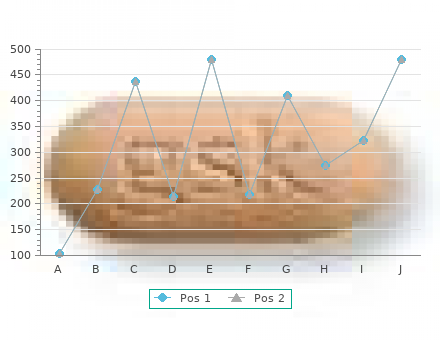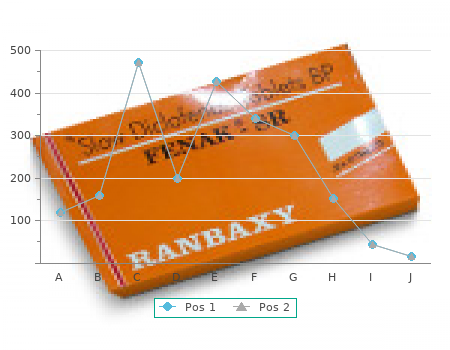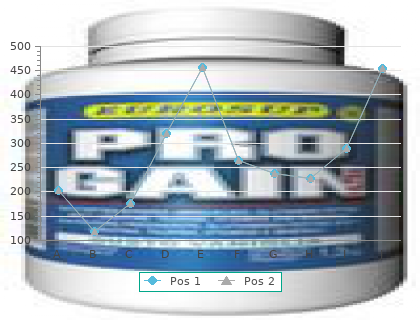Atorlip-20
2018, Michigan Jewish Institute, Yugul's review: "Atorlip-20 20 mg. Quality Atorlip-20 OTC.".
Most plastic surgery procedures buy 20 mg atorlip-20 cholesterol definition english, joint replacements, and other medical approaches are not always performed only to treat medical conditions; they are intended to improve function beyond what a patient normally experiences. The difference between ordinary augmentations and neuroprosthetics lies in using devices to mimic inherent brain signals for enhanced or direct sensory input into the brain, and decoding of normal brain signals for alternate channeling of motor output function. Although a variety of methods have been utilized, many current (and projected) neuroprosthetic devices are implanted directly into the brain. Implantation has the advantage of bypassing peripheral inputs and outputs, hence decreasing the time © 2005 by CRC Press LLC between signal and brain response. For example, a motor output could be channeled directly to a device for enhancing motor control on a microscopic, macroscopic, or larger-than-human level, resulting in considerable scaling of effort, far beyond the capabilities of the ordinary human motor system. Additionally, the time to response could be far less with direct inputs and outputs into the brain by speeding up a reflex loop, assuming the brain can keep pace with such external devices. Time and physical scaling enhancements have obvious practical importance for extending human control to environments that are hostile to biological tissue or, for example, aiding space exploration by decreasing delay in transmission. As argued in a recent article by noted ethicist Arthur Caplan,1 such augmentation is a natural extension of the long human interest in tool use and extends our understanding of the universe beyond our meager physical senses and motor capabilities although it potentially requires brain implants to access the nervous system directly. The main limitations of a scheme for enhancing brain function are deciphering inherent brain encoding of sensation and motor function and achiev- ing a stable interface between electrodes and the nervous system at a sufficiently small level to be meaningful for brain components, particularly axons and neurons on the micron scale. Excessive stimulation or recording interfaces may lead to unrealistic stimulation of multiple nervous elements, resulting in less-than-specific responses or noise and ranging across too many neural elements for decoding of neural output. Since enhancement of human performance and nervous system function are commonly employed now, how would such system be perceived and used in a wider arena? Clearly, the ethical issues point to self-determination and use, in other words, coercion to use a device would argue strongly against self-determination and free choice, particularly for implantable devices. Another ethical aspect to consider is universal access to such self-enhancements to prevent unfair advantage. Of course, most current self-enhancement advantages (expensive colleges, SAT preparation courses, etc. Whoever applies augmentation technology should bear these ethical principles in mind, particularly for implantable devices, to avoid coercion (as with other types of medical care), maintain individual self-determination, and allow the widest access possible. For example, unidirectional sensory stimulation of the nervous system has been used for many years to control pain at the thalamic, midbrain, spinal cord, and peripheral nerve levels; cochlear implants are more recent innovations. However, most devices could be improved by expanding the degree of control provided by feedback, which will be discussed in subsequent sections. Stimulation of somatic sensory axons at the peripheral nerve, spinal cord, or brain level has been used in a nonspecific fashion to relieve pain for more than 30 years. Pain stimulation involves the insertion of an abnormal signal (usually perceived as a buzzing feeling, like an electric razor). This abnormal signal, if perceived in the somatopic area of discomfort, can mislead the nervous system into removing the uncomfortable sensation. These devices do not rely on conscious per- ception of a stimulus, but rather subconscious brainstem stimulation, similar to the predecessor device, cerebellar stimulation (see Chapter 6 regarding demand seizure treatments). An example of a more complex sensory device is a cochlear prosthesis in which microstimulation via platinum/iridium (Pt/Ir) contacts leads to direct activation of the cochlear nucleus, producing “sounds” that can eventually be discriminated by patients after some training. Direct brainstem stimulation of the cochlear nucleus is also being attempted, but the decoding of the input is much more difficult for the patient because natural sensory channels are not directly activated. Other complex unidirectional sensory stimulation devices in development include retinal visual prostheses that stimulate the optical nerve head directly at the back of the retina and direct visual cortical stimulation. These complex sensory stimulation systems clearly require high degrees of specificity of stimulation and considerable training to enable patients to perceive such stimuli. However, Medtronics developed a new version of the DBS electrode and received FDA approval for use in movement disorders in 1999. Because of the common availability of the DBS device and a simple, unidirectional stimulator system (basically, the same types of device control that are available for pain sensory stimulation devices), many additional experimental applications using this device for more than motor control are discussed later. The DBS system has now become a common template for considerations of other types of brain implants because of the direct brain electrodes and associated circuitry and telemetry required for external control. Previous applications of brain surgery to control disorders of the mind and thought usually involved coercion (i. DBS is usually considered to offer a reversible effect that the patient can turn on or off at will, thus introducing the patient autonomy made possible with medical treatments.

It is common knowledge that in order to install any type of information system in healthcare buy generic atorlip-20 20 mg on line cholesterol medication does not affect liver, especially if it involves knowledge management, six main groups of issues have to be dealt with (Iakovidis, 1998, 2000): 1. This issue is rather important, regardless of any information system, since organizational models and culture do not endorse the continuity of care or any type of structured data collection. Issues such as mistrust between different specialists, between the different healthcare structures or between doctors and nurses prevent in many cases the effective sharing of information. Health reforms are currently under way in many countries stressing the will to deal with this problem. The technological gap between healthcare professionals and information science experts. Doctors are often reluctant to use information systems that they believe are not designed for them. From another point of view, Healthcare Informatics have been introduced in healthcare institutions mostly on pilot-based projects aiming Copyright © 2005, Idea Group Inc. Copying or distributing in print or electronic forms without written permission of Idea Group Inc. Efforts in creating interoperability standards and protocols such as HL7 are proposing solutions to address this issue, thus enabling data manipulation and knowledge management. The legal requirements on the confidentiality of personal and patient related data and on data privacy. It is clear that if this issue is not addressed at a managerial and procedural level by imposing suitable policies to meet these requirements, there is little chance that medical data will be kept digitally in a structured manner (thus allowing the transition from digital islands of clinical data towards a structured electronic healthcare record). The implementation of an information system, where the electronic healthcare record is considered to be the core of the system (patient- centered model), is the only way to drive data management towards creating new knowledge. The complexity of the problem can be explained if one just observes the course of implementation of both the Health Information Privacy and Account- ability Act (HIPAA) in the US and Directive 95/46/EC in the EU. The issues seem to have been dealt with at the strategic level, but still a lot has to be done in the implementation and setup of those strategies. In general, the healthcare market is seen by the industry as large in size but not highly profitable, mainly due to the lack of standards in implementing and interoperating healthcare informatics products. As a consequence, the industry has focused on creating mostly small-scale products (i. The lack of end-to-end solutions is dealt with by interconnecting heterogeneous information systems (a rather complex task with constant change management issues) and by introducing solutions from other business sectors (i. The lack of vision and leadership of healthcare managers and health authorities, and the lack of willingness to re-engineer healthcare processes for the benefits of efficiency and quality of care delivery. Some countries are in the process of introducing or implementing such Business Process Reengineering projects in order to address healthcare delivery in a more information flow conformant way. This is a key point in reaching knowledge management, knowledge re-use and sharing, and finally proposing a solution for the knowledge-based society of tomorrow. This issue should be dealt with by proposing strategies that focus on processes and by establishing key performance indicators, balanced scorecards, Copyright © 2005, Idea Group Inc. Copying or distributing in print or electronic forms without written permission of Idea Group Inc. Key Performance Indicators and Information Flow 119 or other metrics that are the upper level of a structured information flow-based model. This issue is the one most strongly related to the problem of dealing with the people-centered approach of the healthcare sector. In order to implement information systems and knowledge management systems, education and training must be addressed with high priority since user acceptability is strongly related to them. Service oriented models and patient-centered information systems have a higher chance of passing the user acceptability test. A system that is not accepted by the user is often a system with poor data quality (or no data at all) and knowledge management, business intelligence or data warehousing solutions are consequently inoperable and unsuccessful. Taking all of the above issues into consideration, this chapter proposes to explore trends and best practices regarding knowledge management from the viewpoint of performance management, based upon the use of Key Performance Indicators (KPI) in healthcare systems. By assessing both balanced scorecards (Kaplan/Norton) and quality assur- ance techniques in healthcare (Donabedian), it is possible to foresee an electronic healthcare record centered approach which drives information flow at all levels of the day-to-day process of delivering effective and managed care, and which finally moves towards information assessment and knowledge discovery (both with administrative and medical data). KPIs should be regarded as the strategic assessment tool, for both the executives and the clinical decision-makers, that will lead healthcare delivery to excel- lence and to knowledge discovery and assessment. Healthcare organizations are no exception and are accepting the challenge to more effectively share knowledge both internally and externally (Strawser, 2000).

A total of 14 ischemic stroke patients were treated in the North American EKOS trial without any complications and with a 57% recanalization rate using the thrombolysis-in-myo- cardial infarction (TIMI 2–3) scale cheap atorlip-20 20mg on line cholesterol medication and weight loss. A total of 31 vessels were treated with 48% recanalization rate (TIMI 2–3), although 2 vessels were perforated during microcatheter placement and before laser therapy. Embolic materials similar to those used for AVM and AVF therapies may be used to embolize tumor feeders. With enhancement of microbioengineering technology, new microcatheters, wires, and particles will lead to more effective adjunctive tumor embolotherapy. Larger Phase II studies planned Endovascular neurosurgery would be an effective and direct means of administering chemotherapeutic agents to brain tumors locally with fewer unwanted side effects from systemic administration. As the molecular biologies and bases of neoplastic diseases are being uncovered, the endovascular approach may be the choice in some cases to deliver gene therapy or newer and more effective antimitotic agents. The current microcatheter technology allows selective catheterization of small arterial branches to deliver higher concen- trations of therapeutic agents directly to the affected neuronal tissues. As the genetic codes unfold, the endovascular approach may become the preferred method of administering gene therapy to combat various genetic and degenerative diseases. Newer and more bio- compatible devices are becoming increasingly available and the interests of physi- cians and industry will hasten the progress even further. In the field of endovascular intracranial aneurysm therapy, the first and largest randomized control study (ISAT) comparing coiling to clipping was completed and published with positive results. When completed, they are © 2005 by CRC Press LLC expected to clarify the exact role of aneurysm coiling, taking into account the fact that U. Advances in microwire, microcath- eter, and guide catheter technology are also imperative to safer and more successful coiling. Angiography equipment in many endovascular suites includes three-dimen- sional rotational capability that allows better delineation of small vessels, aneurysmal origins, and aneurysmal neck and provides better endovascular guidance. Endovascular microangioscopy or aneurysmoscopy is still in its infancy, but may become the future imaging technique for cerebral aneurysms and AVMs. New nonadhesive embolic agents such as Onyx and Ethibloc allow reuse of microcatheters with fewer complications. The field of CAS expanded further with the development of specific, self-expandable extracranial and intracranial flexible stents. Several embolic protec- tion devices that may reduce periprocedural neurological complications are available. For example, rapamycin-eluting stents are associated with remarkable reductions in rates of restenosis in coronary vessels and may prove as effective in the carotid and intracranial blood vessels. Endovascular nonpharmacological means of clot removal and recanalization including the AngioJet, Microsnare, and ultrasound and laser catheters with or without thrombolytic therapies are currently in Phase I trials. The role of near real-time magnetic resonance angiography (MRA) is not well defined yet, and remains to be explored when instant and fluoroscopic real-time MR capability with its compatible catheters, devices, and patient accessibility becomes available. Bioabsorbable polymeric material coils for embolization of intra- cranial aneurysms: a preliminary experimental study, J. Adenosine-induced cardiac pause for endovascular emboliza- tion of cerebral arterio-venous malformation: technical case report, Neurosurgery, 44, 881–886, 1999. North American Symptomatic Carotid Endarterectomy Trial Collaborators, Beneficial effect of carotid endarterectomy in symptomatic patients with high-grade carotid stenosis, NEJM, 325, 445–453, 1991. Asymptomatic Carotid Atherosclerosis Study Executive Committee, Endarterectomy for asymptomatic carotid stenosis, JAMA, 273, 1421-1428, 1995. The primary injury occurs at the time of or a few minutes after a trauma, brain procedure or vascular insult. Intensive care unit (ICU) therapeutic measures focus on preventing, treating, and reversing the evolving second- ary effects of brain damage and its systemic complications following primary events. It also includes a brief review of the modest strides made in management of head injury, postoperative issues, and cerebrovascular problems, including subarachnoid hemorrhage and ischemic stroke. The evolution over time after injury varies by type of injury, although many patients have combinations of different injury types. Computerized tomography (CT) scans may show little initial evidence of the extent of cerebral contusion although some swelling or mild hemorrhage may often be present. A common pattern is the coup–contrecoup injury in which a contusion appears under the skull at the location of the impact and also opposite the area of injury. The typical evolution is that local swelling and cortical irritation occur, often with focal or punctate hemorrhages within the cortex over 2 to 3 days. Occasionally these small hemorrhages (observed on CT scans as diffuse salt-and- pepper areas of hemorrhage) will coalesce to form a substantial intraparenchymal hemorrhage that may form a mass.

Atorlip-20 20mg
9 of 10 - Review by O. Fedor
Votes: 325 votes
Total customer reviews: 325


